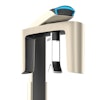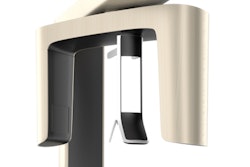
Advances in 3D imaging, instruments, materials, and growth factors in bone-grafting material have changed the way dentists decide between nonsurgical and surgical retreatment or extraction and implant placement on questionable teeth, according to a presentation by Mohamed Fayad, DDS, PhD, at the recent California Dental Association's CDA Presents 2015 meeting.
"Clinicians tend to believe that implants are as good as natural teeth," Dr. Fayad said in a well-attended session on the topic. Dr. Fayad is the director of research at the University of Illinois, Chicago, and he has a private endodontics practice in Chicago.
 Mohamed Fayad, DDS, PhD, director of research, University of Illinois, Chicago. Image courtesy of the CDA.
Mohamed Fayad, DDS, PhD, director of research, University of Illinois, Chicago. Image courtesy of the CDA.3D cone-beam CT (CBCT), microscopics, and ultrasound are helping clinicians decide whether it's worth trying to save teeth through root canal surgery or replacing them with implants, according to Dr. Fayad.
The fundamental goal of dentistry is preserving and rehabilitating teeth, he said.
"However, I'm seeing a lot of teeth saved that shouldn't be saved," Dr. Fayad said.
Dr. Fayad noted that he performs both root canal and implant procedures, so his opinions on which treatments are preferable are unbiased.
To illustrate the differing opinions between the two treatments, he noted that studies show that endodontists, general practitioners, oral surgeons, and periodontists don't agree on whether simple cases should be treated with root canals or implants. However, Dr. Fayad pointed out that studies have also revealed that the success rates of root canals and implants are similar.
"It's not a question of outcomes. It's a question of restorability," he said.
Functional and psychological factors
“We're doing more surgeries now, because better imaging gives us more information, and the surgeries are much more predictable.”
The loss of teeth and their replacement may have significant functional and psychological impact on patients, Dr. Fayad said. Also, endodontically treated teeth maintain the original proprioception of natural teeth. Implants lack a periodontal ligament and the ability to perceive functional loads, as well as the shock-absorbing function of the periodontal ligament, he noted.
Dr. Fayad listed several factors to consider when deciding between root canals or implants:
- Is the tooth restorable?
- Where is the tooth located?
- What is the patient's bone quality?
- What is the patient's periodontal status?
- What are the costs?
For treatment planning, he said a problematic single tooth often has a better outcome with a root canal, while multiple teeth usually require extractions and implants.
Advantages of CBCT
The value of cone-beam CT includes the ability to check bone levels and crown length, according to Dr. Fayad. His 3D slides revealed remarkable detail and other features when compared with traditional x-rays. CBCT can offer clinicians clinically relevant 3D information that can change case diagnosis, treatment planning, and treatment outcomes in daily practice, he said. He presented several challenging cases and the treatment and rationale behind the procedures he chose.
"3D imaging is especially good for analyzing cracked teeth, because it shows how deep the crack goes" and whether they are worth trying to save, Dr. Fayad said. "We're sending more teeth for extraction than before, because 3D shows vertical root fractures and mucositis better."
Other technologies such as microscopics and ultrasound now allow clinicians to do many more procedures without surgery, he noted. As an example of the two techniques, a video showed Dr. Fayad removing broken root canal posts in a patient in less than two minutes.
"It's all about vibration with ultrasound," he explained.
"We're doing more surgeries now, because better imaging gives us more information," Dr. Fayad said. "And the surgeries are much more predictable."



















